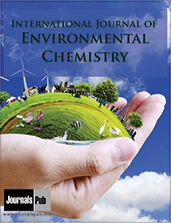Open Access

Enajedu Christopher,
- Postgraduate Research Student Department of Chemical/Petrochemical Engineering, Rivers State University Port Harcourt Rivers State Nigeria
Abstract
The models for the effectiveness of stripper and absorber for the desulphurization and deammonization of sour water were presented. The data obtained showed reliability during simulation of models. The results of simulation showed that ammonia was properly stripped off in the stripper than the other components of the sour water as the overall mass transfer coefficients were 4.0 S-1 when glycol was used as solvent and 3.0S-1 when water was used as solvent. The absorber showed that sulphur had the highest effectiveness as compared to the other component of the inlet gas. The results of simulations when compared showed agreement with computer program and Aspen Hysys model developed. The results of the simulations finally defined that deammonization of sour water was observed in the stripper column while desulphurization was observed in the absorber.
Keywords: Modeling, Simulation, Effectiveness of Stripper, Absorber, Desulphurization, Deammonization, Sour Water
References
1. Asquith J, Moore A. Sour water processing-balancing needs. Proceedings of the Brimstone sulphur recovery symposium, Vail, Colo.; 2000.
2. Hatcher NA, Jones CE, Weiland RH, et al. Sour water stripping part 3; WWT. Technology. 2015.
3. Hauser R, Kirkey RT. Refinery tests demonstrate fixed valve trays improve performance in sour water stripper. AICLE Spring National Meeting, New or Cleans, LA TI-ZE; 2001.
4. Kazemi A, Mehrabani-Zeinabad A, Beheshti M. Development of a novel processing system for efficient sour water stripping. Energy. 2017;125:449–58. doi: 10.1016/j.energy.2017.02.135.
5. Lee D, Lee J-M, Lee S-Y, Lee I-B. Dynamic simulation of the sour water stripping process and modified structure for effective pressure control. Chem Eng Res Des. 2002;80(2):167–77. doi: 10.1205/026387602753501889.
6. Ponting J, Kister HZ, Nielsen RB. Troubleshooting and Solving a sour water stripper problem. Chem Eng (USA). 2013;120(11):28–34.
7. Quinlan MP, Hati AA. Processing NH3 Acid gas in a sulfur recovery unit, preceding of the Laurence Reid Gas Conditioning Conference. Norman, OK; 2010.
8. Sharma MK, Nag A. Process developed for enhanced H2S recovery from sour water strippers. Oil Gas J. 2009;107(18):44–9.
9. Zhang S, Gao X. Modelling of stripper temperature based on improved T-S fuzzy Neural Network. J Comput. 2014;9(5).
10. Sujo-Nava D, Scodari LA, Slater CS, Dahm K, Savelski MJ. Retrofit of sour water networks in oil refineries: A case study. Chem Eng Process Intensif. 2009;48(4):892–901. doi:10.1016/j.cep.2008.12.002.

International Journal of Environmental Chemistry
| Volume | |
| Received | June 5, 2021 |
| Accepted | July 15, 2021 |
| Published | January 7, 2023 |

